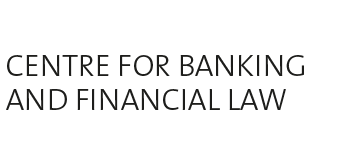Money laundering using digital assets
Adaptation of the financial industry despite growing use and increasing risks

Adrien Tharin
(Translated by DeepL)
On 28 February 2024, the Federal Office of Police’s Interdepartmental Coordination Group on Combating Money Laundering and the Financing of Terrorism (Fedpol) presented its second report on the money laundering risks associated with digital assets (i.e. digital assets based on blockchain technology such as Bitcoin or Ethereum). The report is of interest to financial intermediaries active in this area – in particular compliance functions – and proposes various recommendations to improve the fight against money laundering. It also highlights certain difficulties encountered by digital asset service providers.
Fedpol has based its analysis primarily on reports submitted to MROS, information provided by the supervisory authorities, reports from international organisations, market analyses and academic studies. The authority first notes the rapid and significant evolution of the financial industry linked to digital assets over the last five years and identifies four main trends in Switzerland :
- An increase in the number and size of financial intermediaries offering services linked to digital assets (from just ten or so providers in 2018 to more than 204 by the end of 2022, with transaction volumes of several tens of billions of francs).
- An increase in the use of digital assets in Switzerland, by both individuals and businesses, for payment transactions, the purchase of goods and services, and investments, as well as growing convergence between the traditional financial sector and the digital assets sector.
- An increase in the use of digital assets for criminal activities, both in Switzerland and abroad, in the vast majority of cases involving individual offences (fraud) but also more serious – but rarer – forms of organised and transnational crime, including money laundering.
- Increased awareness and knowledge of money laundering risks in the digital asset sector, leading to an increase in reports to MROS (with reports relating to digital assets accounting for almost 14 % of all reports by 2022) and a strengthening of international and national standards applicable to digital assets.
The report assesses the risks of money laundering by identifying threats (such as the use of digital assets in connection with criminal activities on the internet), vulnerabilities (such as the lack of available data), as well as various mitigating factors (such as the transparency inherent in most blockchains and a growing understanding of the subject by the authorities).
Particular attention is paid to the Travel Rule and the uneven nature of its implementation by FATF member states. This rule requires financial intermediaries to identify the recipient – and not just the originator – of a transfer of assets. This rule is already implemented in Switzerland, but more strictly than recommended by the FATF (Switzerland applies the rule without a minimum threshold, whereas the FATF recommends greater verification if the amount of the transaction exceeds USD 1,000). Fedpol also points out that application of the Travel Rule is not yet widespread at international level (only 35 out of 135 member states have adopted the rule to date), making the industry more vulnerable to the risk of money laundering. Finally, it should be noted that the entry into force of the European regulation on crypto-asset markets (MiCA) and the status of crypto asset service provider (CASP) should enable a large number of countries to align with this practice (the European standard also provides for a strict regime with no minimum transaction threshold).
Other points also merit attention. On the one hand, Fedpol notes that most of the reports to MROS were made by financial intermediaries who were not themselves mainly active in the field of digital assets. This finding reflects an improvement in the vigilance of financial intermediaries with regard to activities linked to digital assets. On the other hand, most of the reports are based on suspicions aroused as a result of information collected by the intermediaries from third parties (specialised service providers). This means that financial intermediaries are now relying on better quality information, in particular through the use of tools to identify suspicious transactions or sources of funds. In our view, these two observations are to be welcomed in that they confirm that digital assets have been effectively integrated into the fight against money laundering. Fedpol points out, however, that more needs to be done to ensure adequate prevention.
The report concludes by proposing four measures to strengthen the current system : (i) improve the level of data and knowledge on the digital assets sector in Switzerland ; (ii) encourage financial intermediaries active in the digital assets sector to adopt a more proactive approach to reporting to MROS ; (iii) strengthen the skills, resources and tools of the supervisory and law enforcement authorities and other key players ; (iv) participate actively in international initiatives aimed at harmonising and coordinating standards and practices. It should be noted that Fedpol is not advocating any legislative changes in Switzerland.
This report is of particular interest to financial market participants. It highlights (i) the need to adapt anti-money laundering mechanisms to digital assets and (ii) the potential exposure of financial intermediaries to the risks inherent in this industry.
It also highlights the practical problems associated with the Travel Rule, which amounts to authorising only transfers between financial intermediaries subject to supervision – and equivalent supervision at that. In our view, Swiss intermediaries are right to deplore the fact that a higher standard has been imposed on them, resulting in practical difficulties in dealing with foreign financial intermediaries, who are not subject to the same standards.
Finally, the report usefully draws attention to the need for intermediaries to increase their vigilance, to report suspicions more effectively and, more generally, to pursue efforts to harmonise the international regulatory framework.




